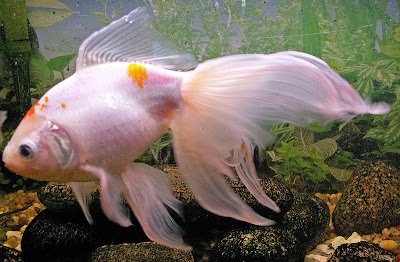It also has a high, prominent and well-developed dorsal fin. The anal fins are paired and are quite well-developed as well. The term 'veiltail' is commonly and erroneously applied to any goldfish displaying a long caudal, but true veiltails must have all the charactersitics described above. Veiltails are available in many colors and may have either metallic or nacreous scales. They can grow from 8 to 12 inches (20 to 31 centimeters). They are not good swimmers but can be kept with other fancy goldfish. Veiltails will not accept temperatures below 55 degrees Fahrenheit (12.7 degrees Celsius).
History and origins
The veiltail, a name coined by William T. Innes, originated in the United States in the 1890s when Franklin Barrett of Philadelphia bred a Japanese-bred ryukin to a telescope eye goldfish that exhibited a short, square-edged caudal. This resulted in a strain of fish soon to be known throughout the world as Philadelphia veiltails.

Variants
Apart from those bred and developed in the United States, there are now also Chinese and European strains. They can also occur with normal or telescope-eyes.
Special care
